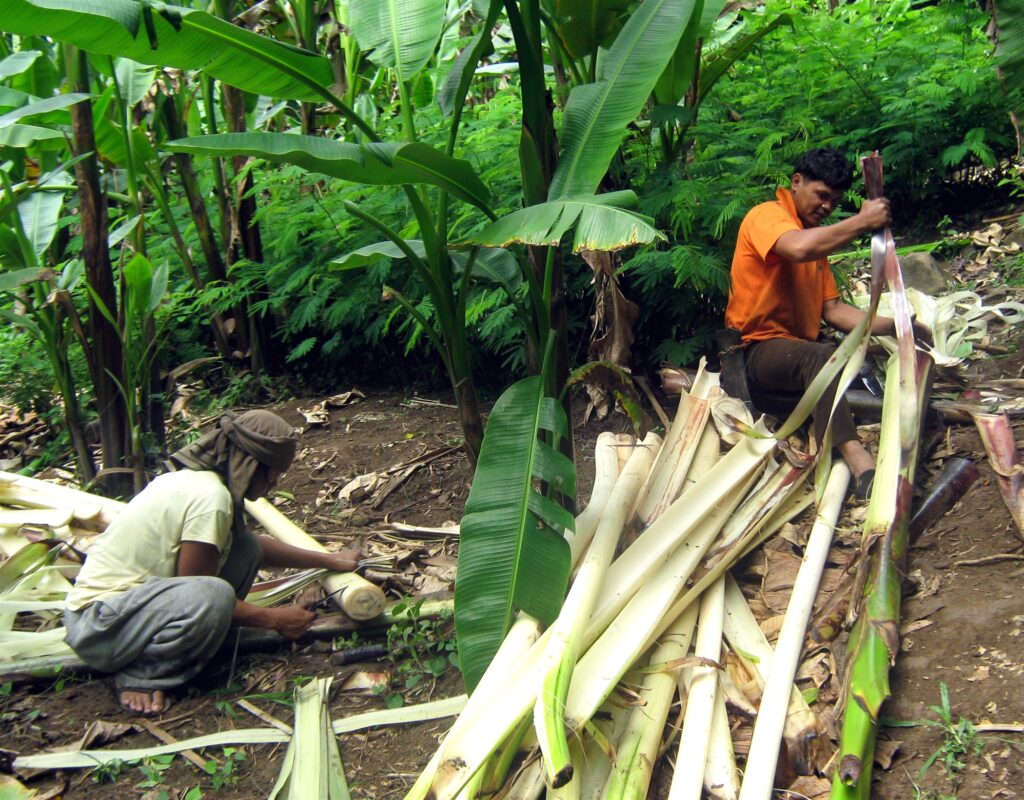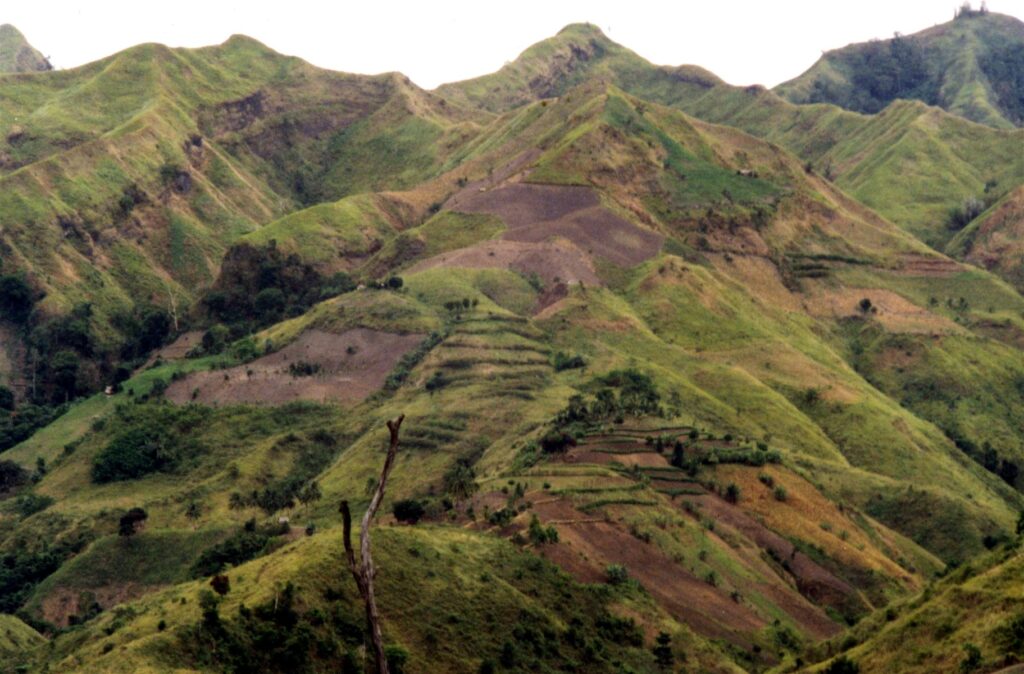Text and Photos by Henrylito D. Tacio
Once upon a time, the Philippines was totally covered by forest.
Jose Ma. Lorenzo Tan, a noted environmentalist and wildlife photographer, wrote in an article that forests covered 70% of the Philippines in the 1900s. By the mid-1960s, only 13.5 million remained, of which barely 6.3 million hectares were considered a primary forest.
During the administration of President Ferdinand Marcos, forests were decimated at an astonishing rate of 300,000 hectares per year.
“As the timber boom gained momentum, the government was unable to supervise concessions effectively or enforce logging regulations,” wrote Robert Repetto, author of The Forest for the Trees? Government Policies and the Misuse of Forest Resources. “Links between timber companies and politicians further eroded government control.”
The most recent data, from the Global Forest Resources Assessment report of the UN Food and Agriculture Organization (FAO), showed the country has a total forest cover of 1,014,156 hectares based on the land cover data in 2015. That means only 23.4% of the country’s total land area of 30 million hectares.
The extensive loss of forest is catastrophic for a country with a population of more than 96 million. “Failure to protect our remaining forest would mean a great loss of the country’s rich repository of biodiversity of all time,” said Fulgencio Factoran when he was still the head of the Department of Environment and Natural Resources (DENR).
Filipino environmentalists urged government agencies to do something to save the vanishing forests. Aside from DENR, another agency at the forefront of saving the country’s ecologically-fragile natural resources is the Department of Science and Technology (DOST).
But one of DOST’s line agencies has been misunderstood as being anti-environment due to its name: Forest Products Research and Development Institute (FPRDI).
“Some people think that the agency’s mandate promotes deforestation, the alleged culprit behind the devastating floods that hit the country in 2020,” wrote Rizalina K. Araral of Science and Technology Media Service. “It is not true, of course, that the institute endorses deforestation.”

While FPRDI did study premium timber and catered to the needs of the forest-using industries during its earlier years, it branched out to study other related natural products way back in the 1980s.
“As the country’s wood supply began to dwindle due to reckless logging, the agency had to look for substitute raw materials for its clients in the housing, pulp and paper, handicrafts and furniture sectors,” Araral wrote.
Over the next decades, the FPRDI researchers have probed all kinds of possible replacements to forest timber. These include bamboo; industrial tree plantation species (ITPS); senile coconut wood and rubberwood; abaca; and agricultural residues such as coconut coir, tobacco stalks, tea leaves, corn stalk, and rice straw. They have also studied fiber plants, dye plants, forest woody vines, as well as tree gums, resins, oils, and exudates, among others.
“Because of our name, our work has sometimes been misunderstood by the public, and even by policy makers,” says Romulo T. Aggangan, the institute’s director. “During Senate Budget Hearings, some lawmakers would ask about the relevance of what we do, considering that the country has very little forest cover left, and these have already been made off-limits to all kinds of logging. We then have to explain to them what we do and what we have done so far.”
Over the years, wood anatomists, chemists, and forest products engineers of FPRDI have studied the properties and uses of 15 kinds of industrial tree plantation species like falcata and yemane.
Falcata (scientific name: Falcataria moluccana) is commonly grown in tree plantations across the country. It gained popularity due to its suitability in the intercropping of coffee, cacao, abaca, and root crops.
Yemane (Gmelina Arborea) is a fast-growing plantation wood species and matures 12 years after planting compared to Philippine mahogany, which matures in about 30 years. It is considered one of the most promising raw materials for furniture.
As a result of the studies done by FPRDI, many managers in the wood-based industries now understand how to saw, machine, dry, finish and treat these non-forest raw materials. Fast-cycle trees grown in plantations are good substitutes to forest timber for construction and many other industrial uses.
The FPRDI is also behind the furnace-type lumber dryer. “This is like a big oven which can dry natural raw materials fast and right, resulting in quality wooden furniture which don’t shrink or crack, and handicrafts which are not attacked by molds,” Aggangan explained.
The Connor Group, one of the world’s top merchandise-sourcing firms, hailed in 2018 the institute for its role in raising the quality of Philippine handicraft exports through the furnace-type lumber dryer.
“Another helpful technology is the low-cost wood moisture meter which helps our clients know how much water a piece of wood contains. This is important to ensure the quality finished product,” Aggangan said.

Bamboo 
Mountains are denuded
It’s not only the wood industry that is being helped by the institute. In fact, it has also trained countless aspiring business people on handmade papermaking, innovated wine barrels from tree plantation species, and developed machines for making engineered bamboo, one of the promising housing materials in the country today.
In Zamboanga Sibugay, the FPRDI has also set up a state-of-the-art processing plant for converting old and unproductive rubberwood into quality furniture – a big help to rubber farmers.
But those innovations are just among the many the agency has done through the years. Right now, the FPRDI is studying the how-to’s of the following: optimization of the abaca fiber for making high-end industrial products, upgrading bamboo musical instruments, and making the most of forest woody vines as handicraft raw materials, among others. It is trying to develop fragrances and flavors from forest products.
The FPRDI is also running world-class testing laboratories for furniture, plywood, pulp, and paper and also conducts wood identification, physical and mechanical properties, and biomass energy tests on forest-based and related products.
“Come to think of it, our name is a misnomer,” Aggangan clarified. “It doesn’t exactly reflect who we are, because we do so much more than study’ forest products’. We do not study forest timber anymore, but instead look for ways to wisely use many native plants and related natural materials to meet our clients’ needs. Much of what we do shows our aim to help protect – and not destroy – the planet.”
Take the case of bamboo. In its bamboo projects, he stressed, the institute not only supports the bamboo-based industry but also promotes bamboo farming.
“Putting up more plantations worldwide can help stabilize the earth’s climate by limiting the effects of global warming,” Aggangan said. “More than any other plant, it can absorb massive amounts of carbon from the atmosphere, which is a major cause of global warming.
“The same is true with tree plantation species,” he added. “As we do more studies on them, we promote the setting up of more tree farms and the use of products harvested from them, which are known to be effective carbon absorbers.”
In their current projects, Aggangan adds, FPRDI researchers are looking for more earth-friendly ways of doing things – for example, more energy-efficient sawmilling, drying and machining methods, and less toxic methods of preserving wood.
“In the coming years, we will continue to work towards the competitiveness of our client industries while promoting sustainability,” he concluded. “These two things – competitiveness and sustainability – should always go together. No matter how fantastic, scientific innovations will mean nothing if they damage the environment.”

